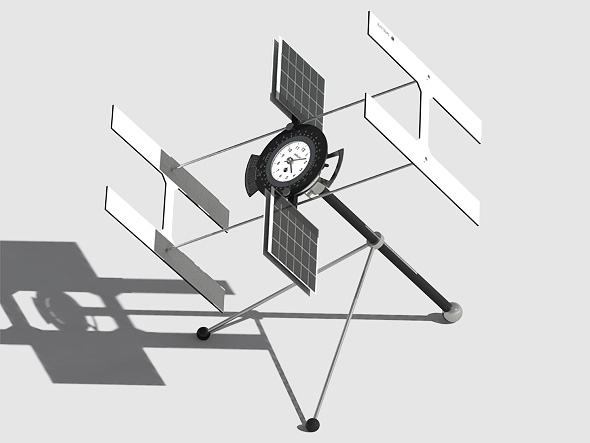
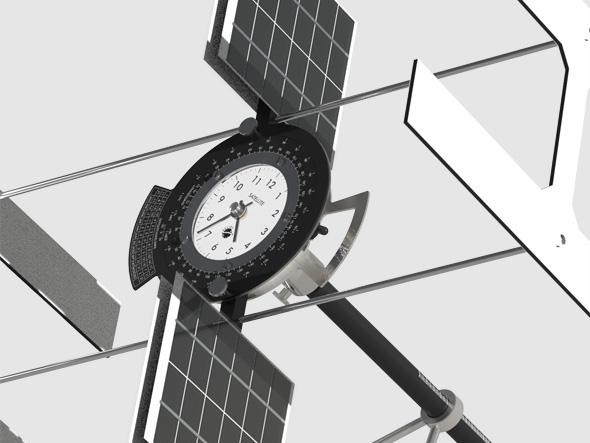
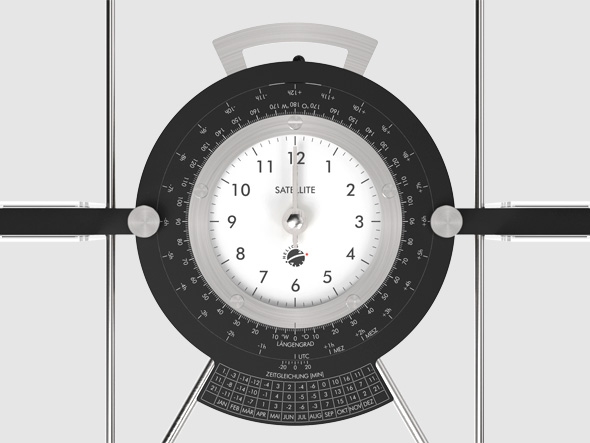
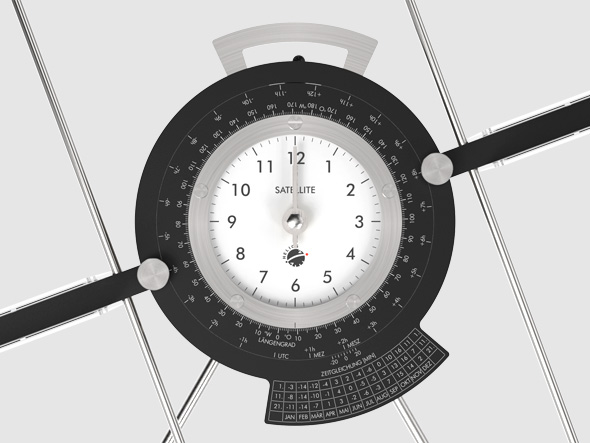
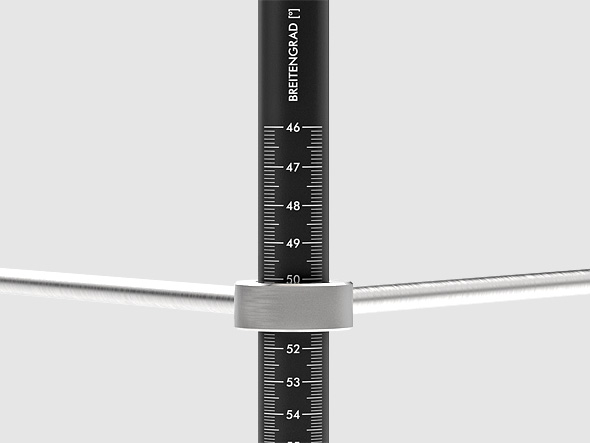
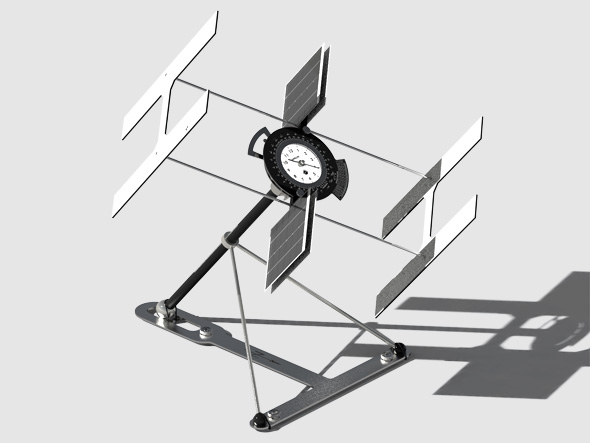
SATELLITE Sundial
- Shipping costs included in Germany, EU and Switzerland on any order of 100 Euro or above
- Low price shipping outside the EU by registered letter
- 2 weeks statutory right of return (customised products excluded)
- Hotline: +49-611-185 11 06
Description
SATELITE - Follow the Sun
The patented SATELLITE is the first solar powered sundial with hour and minute hand! From this sundial you can read the time, as on your analog wristwatch, from a twelve-hour dial. Remarkable for a sundial that normally measures the time of day in 24-hour increments.
The SATELLITE is also unusual in other ways, tracking the Sun with an electric motor powered by two solar cells connected with reversed polarity. When the two solar cells are equally illuminated, their electrical voltages cancel each other out and the motor is at a standstill. This would remain so if a shield were not stretched in front of the solar cells, covering them at the inner edge. If the sun now moves further west due to the earth's rotation, the eastern solar cell is covered more and more, while the western one receives more and more sunlight. This causes the voltage difference to increase continuously. When the voltage at the motor reaches about 0.5 V, it starts running and moves the solar cells clockwise until the shield covers both solar cells equally again and the motor stops. Then the solar cells point exactly to the Sun again and you can read the updated time on the clock.
An ingeniously simple principle that does not require any electronic control. The circuit consists only of two solar cells, a motor and a switch.
Take a look at the video that explains the function in detail and shows the SATELLITE in sunny operation (in German):
A sundial with a twelve-hour dial will also be expected to show our usual time, which we read from our wristwatch. This is by no means a self-evident feature for a sundial, but it is not a problem for the SATELLITE, since the longitude of the location and the date-dependent equation of time can be set on scale rings.
The SATELLITE is suitable worldwide for all time zones between 46° and 67° north latitude. At each location the standard time zone valid for the own country can be set up. In Germany and neighboring countries, this is Central European Time (CET) or Central European Summer Time (CEST).
In the summer months, it can often happen that the solar movement has turned so far to the west that the front solar cells are not reached by the sun's rays the next morning. No problem for the SATELLITE, because now the rear solar cells take over. This principle is made possible by the pairs of solar cells on both sides and the twelve-hour display, because this allows the solar movement to rotate around the polar axis twice in 24 hours. This is done with an epicyclic gear that eliminates the need for vulnerable slip rings. Please watch the following video to see how this works:
The SATELLITE is suitable for year-round outdoor use. It can be operated on a flat table and is simply aligned by comparing the time. A levelable base holder is included for positionally accurate mounting of the sundial. The assembly and operation of the SATELLITE is described in a detailed manual with many pictures (in German).
Documents and links
detailed, illustrated manual of the SATELLITE sundial (in German language)





